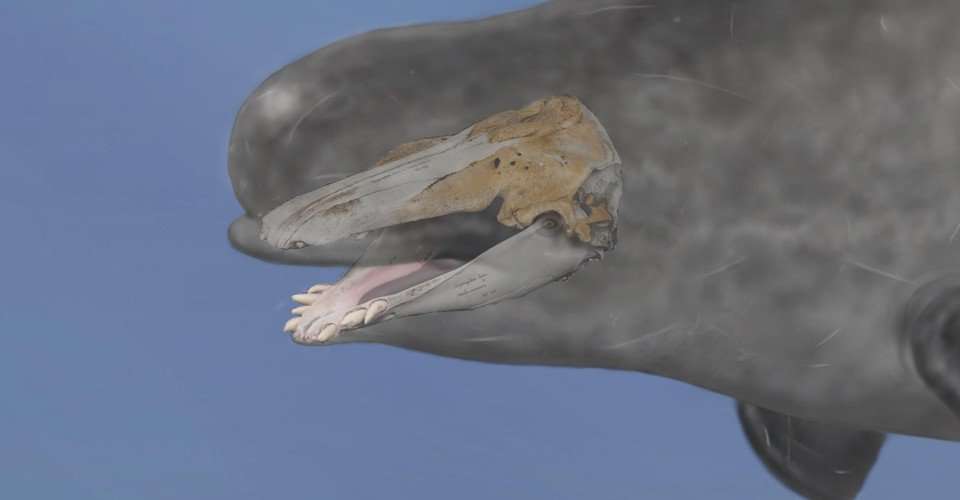Read: The race to safeguard the Arctic’s natural heritage
That changed in the intervening decades, as researchers developed more and more powerful ways of yanking minuscule amounts of DNA from bones. These techniques have typically been used to study ancient creatures such as Neanderthals and mammoths. And now they have helped to prove that the narluga is indeed a narluga, supplying the first genetic evidence that such creatures even exist.
By analyzing DNA extracted from one of the creature’s teeth, a team led by Eline Lorenzen from the Natural History Museum of Denmark showed that it was a male, born to a beluga father and a narwhal mother. Most of its DNA was a half-and-half mix between the two species, but its mitochondrial DNA—a secondary set that animals inherit only from their mothers—was entirely narwhal. “A while back, we presented our findings at a conference of 150 people who are very into belugas, and you could hear a pin drop,” Lorenzen says. “None of them were familiar with hybrids between those two species.”
A brief digression: When naming hybrid animals, patriarchal conventions dictate that the father’s species comes first in the portmanteau. A cub born to a male polar bear and a female grizzly is a pizzly, but one with a grizzly dad and a polar mom is a grolar. So, technically, the skull from Larsen’s toolshed is a belwhal, not a narluga. But the latter name might well stick because it’s been called that for decades and, as Lorenzen says, narluga just sounds better.
Narwhals and belugas have been evolving independently for at least 1 million years. They clearly can still breed with each other, but no one knows why or how often that happens. Both species breed at a time of year when thick sea ice keeps inquisitive scientists out, so we know next to nothing about how they reproduce. The male narwhal’s tusk, for example, was thought to be so sexually attractive that a female narwhal would be unlikely to mate with a tuskless male from another species. And yet, the narluga’s narwhal mother clearly did have sex with a beluga. “What are the odds that someone would find the only hybrid ever and keep it on his shed, and that someone else would find that and send it to a museum?” Lorenzen says. “There must be more. But maybe not! We have no idea.”
The strangest part of the narluga’s skull is its teeth. Belugas have up to 40 teeth in their upper and lower jaws, all of which are identical. Narwhals have no teeth at all, besides the spiraling tusk and a pair of vestigial teeth behind it. The narluga seemingly split the difference between its parents with 18 teeth, all different and strangely shaped. Many of these stuck out horizontally, and some even had spirals that turned in the same direction as a narwhal’s tusk. It’s as if someone took the program for creating a narwhal tusk and ran it in a beluga’s mouth.
By analyzing the chemical composition of those weird teeth, Lorenzen’s team could work out what kind of food the narluga ate. And they showed that its diet must have been radically different from either of its parents, both of which dive in search of fish and squid. The narluga’s teeth, by contrast, were chemically closer to bottom-feeders like walruses, which dig up buried prey from the ocean floor. Perhaps the narluga did the same thing, using its outwardly protruding teeth as shovels for rootling through sand.

rolfraikou on June 20th, 2019 at 23:45 UTC »
The idea of a hybrid animal needing to eat such a different way from its parents never even occurred to me! How interesting.
BackwardPalindrome on June 20th, 2019 at 23:09 UTC »
So who killed the narluga?
TuckHolladay on June 20th, 2019 at 22:38 UTC »
Ive read that pods of both species will adopt the other if they find them alone